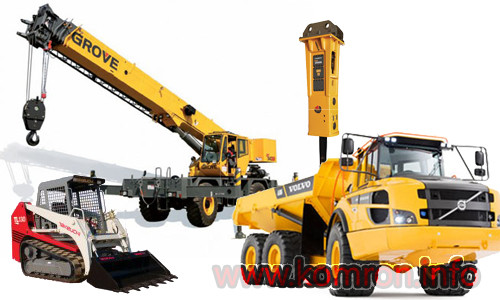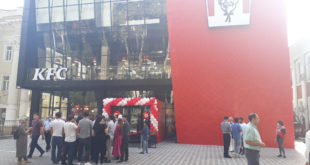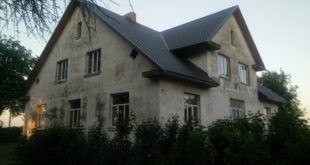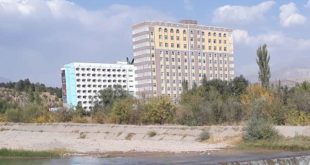The construction sector in Tajikistan has developed rapidly in the past five years and continues to grow at an average rate of 5-10% per year. The construction sector is mostly state financed industry. Prior to 2003 the sector attracted little investment due to the unstable business environment and lingering effects of the 1992-97 civil war. Although the current global financial crisis may dampen construction, at the moment it remains one of Tajikistan’s most dynamic sectors. In fact, according to some analyses, the crisis may actually help the sector, as investors put their cash into comparatively safe real estate. The sector accounted for 7.4% of GDP in 2011.

The main client is the government, which commissions the vast majority of construction in Tajikistan. Using financing from the state budget and foreign loans, it is commissioning hydro energy projects, road building, and other infrastructure construction. Government contracts make up a relatively small percentage of the housing market, however.
Despite the huge investments into hydroelectric power, roads, and tunnels over the past five years, neither the government nor the private sector has invested in the production of tangible goods. The local business environment still does not favor long-term investments into this area due to problems with credit accessibility and an unpredictable business climate.
In 2011 the energy sector accounted for 28.4% of the country’s total investment volume in the construction sector. This includes the Sangtuda-1, Sangtuda-2, and Roghun projects. The construction sector is dominated by state-led construction projects with
loans from China, Russia, and Iran. In addition to hydro, priority is given to road and tunnel construction, which is mainly funded by foreign loans, primarily from the Chinese Government.
Due to a relatively underdeveloped banking sector, many Tajiks prefer to invest in real estate, and home construction is active in the suburbs and rural parts of the country. Although most large-scale construction is done by Italian, Chinese, Turkish, and Russian companies, local construction companies are growing as well. Domestic firms are mainly involved in building housing, schools, and hospitals, and in renovation projects.
Production of Construction Materials
There are 150 companies involved in construction materials production, with total volume of $$100 million in 2011. The main products are cement, gypsum, bricks, steel/cement construction, and non-ferrous materials. Six companies are involved in cement production, producing up to 300 thousand tons, which covers only 30% of the market demand in Tajikistan. Tajikistan imported 500 thousand tons of cement from Pakistan (through Afghanistan) and Uzbekistan.
Regulatory Agencies
There are 15 regulatory and project design agencies in Tajikistan. The five key players are:
GIPROSTROY – The State Institute of Design and Construction GIPROPROM – The State Institute of Design and Industry CANIIPOSF – The Central Asian Scientific Research Institute for Foundations and Layers NIIGUP Construction and Architecture – The Scientific Research Institute State Unitary Enterprise of Construction and Architecture.
Construction Companies
There are an estimated 1,500 construction companies in Tajikistan, including 110 that are state-owned, 90 joint stock companies, 1,200 companies with limited liability who self-identify as construction-oriented, and 26 repair companies.
In spite of the large number of companies, just a few key players dominate 60% of the construction market: TADES, Story Invest Company, Mavorunahr, Domostroytel, Alkon, Na-Na, Monolit Stroy, SohtmonMahsus, Promstroy, and Honasoz.
Main Clients in the Construction Sector
The Directorate of Construction Sites, located in the President’s Executive Office, is the key office for state contracts. It coordinates and controls the construction of all government-owned buildings and projects.
In the city of Dushanbe the key government body for construction is the Department of Capital Construction which directly reports to the Mayor.
Beyond this, key customers and clients in the construction sector are the governments of Tajikistan and other states. The World Bank, the Asian Development Bank, and the governments of China, Russia, Iran, and Kazakhstan are all involved in infrastructure development in Tajikistan.
Credit and Financing in the Construction Sector
Long-term loans are not available for most Tajik construction companies, which prefer to operate on a cash basis. The government mainly finances its infrastructure and energy projects by attracting foreign loans and credits of foreign government and International Financial Institutions.
Risks associated with the construction sector involve delayed government payments and corruption that interferes with competition and equitable regulation
Construction in Dushanbe
In 2006-2011, several commercial projects were launched in Dushanbe. Among those are construction of four 5-star luxury hotels (Hyatt, Serena, Sheraton and one with no specific affiliation yet), four large business centers (Sozidanye, Vefa, Dushanbe Plaza, and Poitakht) and several commercial office renovation projects. In 2011-2012 Asian Development Bank and EBRD plan to invest more than $200 million in the renovation of a highway connecting Dushanbe with Uzbekistan. In 2012-2014 the Qatar construction and development company, “Qatari Diar,” plans to invest more than $290 million in the construction of an “elite” district in Dushanbe. Private companies in cooperation whit the Dushanbe mayor’s office plan to invest up to $100 million to develop downtown Dushanbe. According to the Tajik government’s National Development Strategy for 2005-2015, more construction projects are planned in all major segments of the construction sector.
 Комрон.инфо
Комрон.инфо



